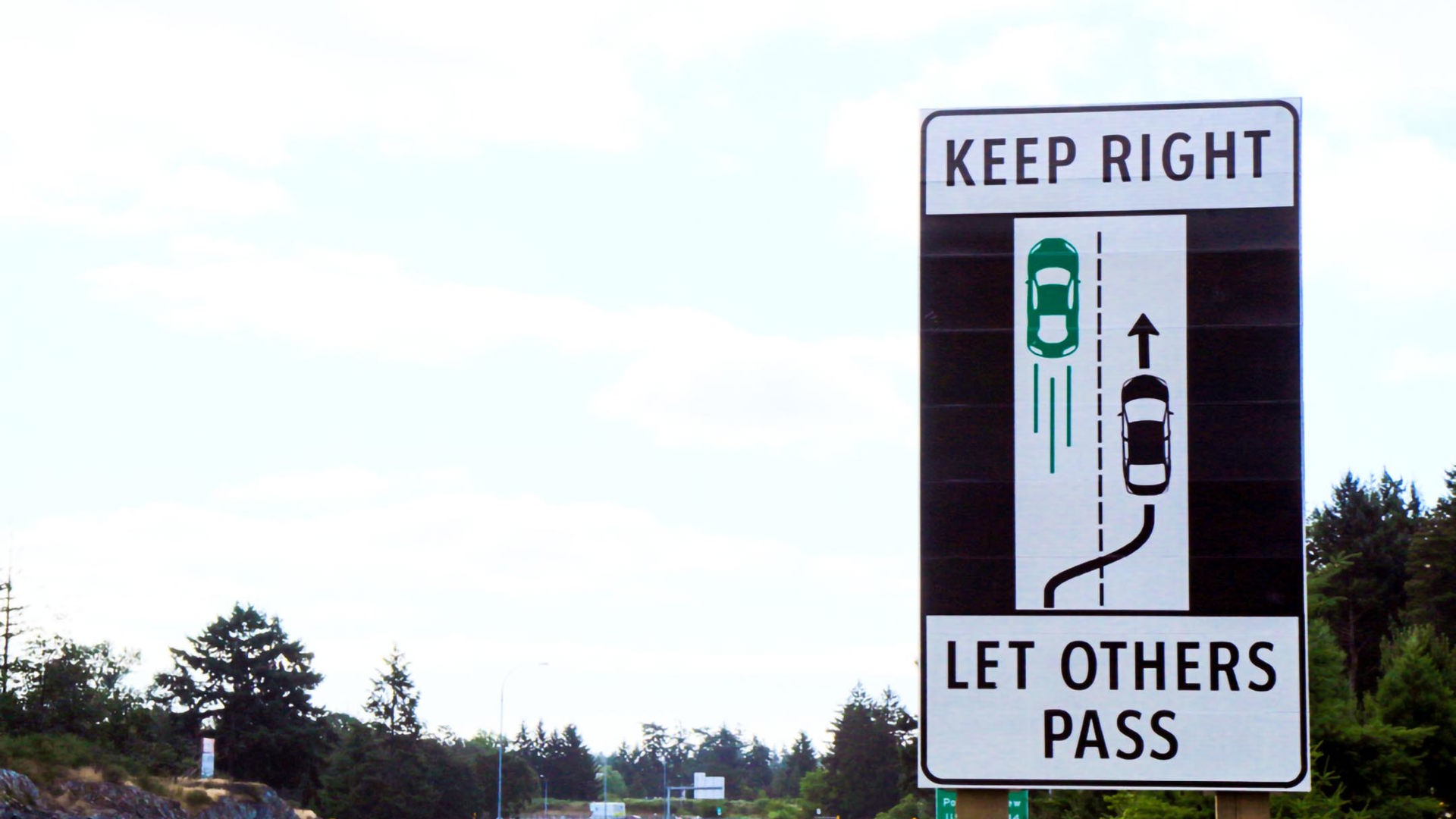No one likes traffic, but for many drivers, it’s a daily ritual of misery. We commute to work, take our kids to school, run errands, and if you live near a big city like Toronto it’s even worse. Highway 401 can bring grown adults to tears by mere mention of its name. The clogged arteries crawling through the GTA (Greater Toronto Area, not the video game) also bring drivers who seem to lack courtesy and common sense. Concepts like lane etiquette are about as foreign as proper turn signal usage.
The dreaded left lane camper, bandit, or hog, whatever you call them, is a special one. You’ll find them on every highway. They’re easy to spot, just look for the long line of angry motorists behind them. Put simply, when traffic is moving at a steady pace, cars should be in the lane furthest to the right. This is more important on a multi-lane controlled-access highway like the 401. If you’re not actively passing cars, you should be driving in the right lane and the left should be reserved for passing slower traffic.
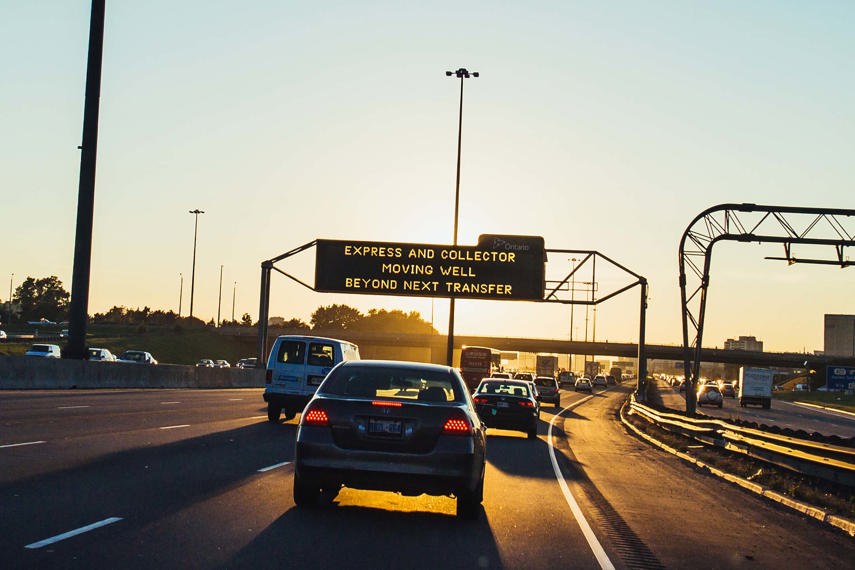
Section 147 of the Ontario Highway Traffic Act covers this. And you can get fined a minimum of $150 if you’re found in violation of it. The Ontario Provincial Police (OPP) enforces it too. Here’s a post from the OPP’s Central region Facebook page where a driver was handed a $180 ticket for failing to move to the right to let the vehicle behind pass.
We asked Toronto Police Constable Sean Shapiro for his thoughts on this contentious subject.
“Aside from bumper-to-bumper traffic when there’s nowhere to go and no one’s going anywhere, yeah, you should be driving – at or below the speed limit – furthest to the right,” Shapiro said on a phone call.
If his name sounds familiar, it’s probably because you’ve seen his TikToks or heard him on the radio or some other form of social media. Shapiro runs the @trafficservices account that’s amassed over 647,000 followers. He’s also known as the Voiceover Cop and he plugs in every weekday as host of “Ask a Traffic Cop” that’s broadcast from the Toronto Police Traffic Services headquarters. He answers all your traffic and driving safety questions with conviction and he’s passionate about what he does.
Shapiro is a stickler for the law, so it bugs him when he sees people doing illegal things even when he’s off duty. Speeding is an especially bothersome one for him because it’s so common.
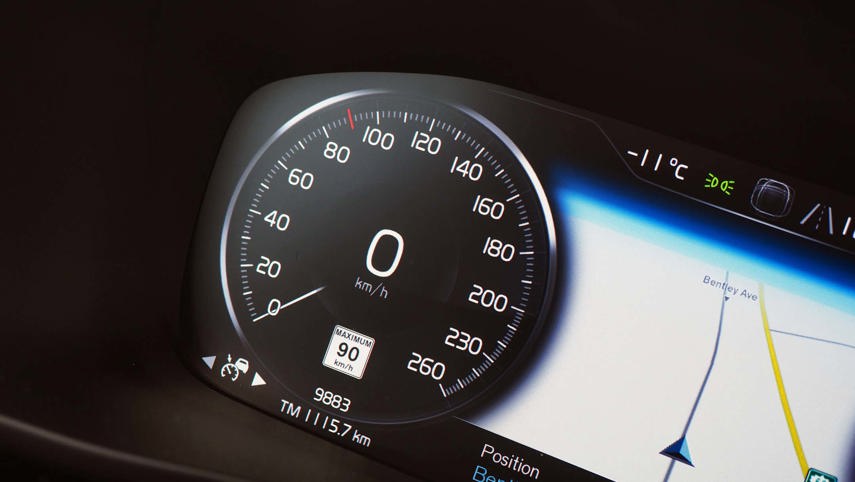
“So many people think that the [posted] speed limit is the starting point, a suggestion of where you should be at a minimum. And they’re wrong. They’re making roads unsafe for everybody,” said Shapiro. “I drive the speed limit everywhere I go. Or below it depending on road conditions, and I stay to the right side. I am passed like I’m not even moving on my ride to work daily.”
Moving to the right to allow faster traffic behind you to pass is rife with debate, which mainly stems from the fact that the passer is likely speeding. In many cases, they are speeding and that’s illegal, but blocking those behind by sitting or “camping” in the left lane, whether purposely or not, is also illegal. It’s not up to motorists to decide when the law applies and when it doesn’t. That’s the job of a police officer.
“I don’t like the concept that I should have to go above the posted speed limit to accommodate people that are breaking the law. That said, I know the OPP enforces, quite heavily, [the concept of] move to the right for slower moving traffic,” said Shapiro. “And I get the reason they’re doing it. They want people to not block the left lane because people who are choosing to speed then make unsafe maneuvers, putting others at risk.”
You can see this playing out every day. If the driver blocking the left lane doesn’t yield, the person behind, out of frustration, will sometimes resort to making an unsafe pass on the right (or even worse, by using the high-occupancy lane or the shoulder). And the person behind them will do the same, and the person behind them, and so on. It causes tempers to spiral out of control and can create a potentially dangerous situation on the highway. Yes, moving to the right to accommodate someone who is speeding can seem incorrect, but it’s undoubtedly the safer thing to do.
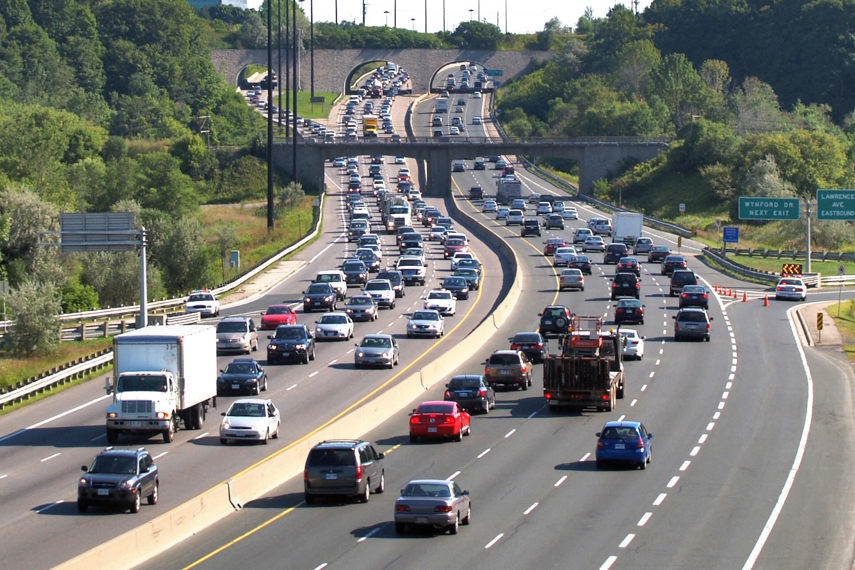
“I totally support that it’s dangerous. For the safety of the person in the left lane, I would urge them to stay to the right. But I personally would sooner charge the speeder. It’s just my personal take on it,” said Shapiro. “There’s a common misunderstanding and it’s an abuse of ‘following the flow of traffic.’ That is not a licence to speed. Because everybody else is speeding, doesn’t mean I get to speed too.”
If more drivers practiced proper lane etiquette, like moving to right except when passing, we’d have safer roads right away.
“If you look at how Europe does it, like in Germany, you see the left lane and it is a ghost town because everyone’s going the appropriate speed in the right lanes,” said Shapiro.
He adds: “They [Europe] got a bunch of things going for them. They have a higher quality of driver because they have more regulations and stages at which you must drive to achieve the next level. I’ve spoken with people that have moved from Canada to Ireland, for instance, and they couldn’t even get licenced because it was expensive and it was prohibitive because of the amount of experience you have to accumulate driving within their system.”
In places like Germany, sections of the autobahn with unrestricted speed limits are only possible because of the number of rules and the heavy enforcement of them. More importantly, drivers there follow those rules and have a general appreciation for them. Passing on the right is illegal and highly frowned upon there. So is failing to move to right to let a faster vehicle pass. Speeding is also forbidden on the sections where there are speed limits. The autobahn has its own police force that doles out hefty fines to those in violation of the rules. It’s what keeps drivers safe.
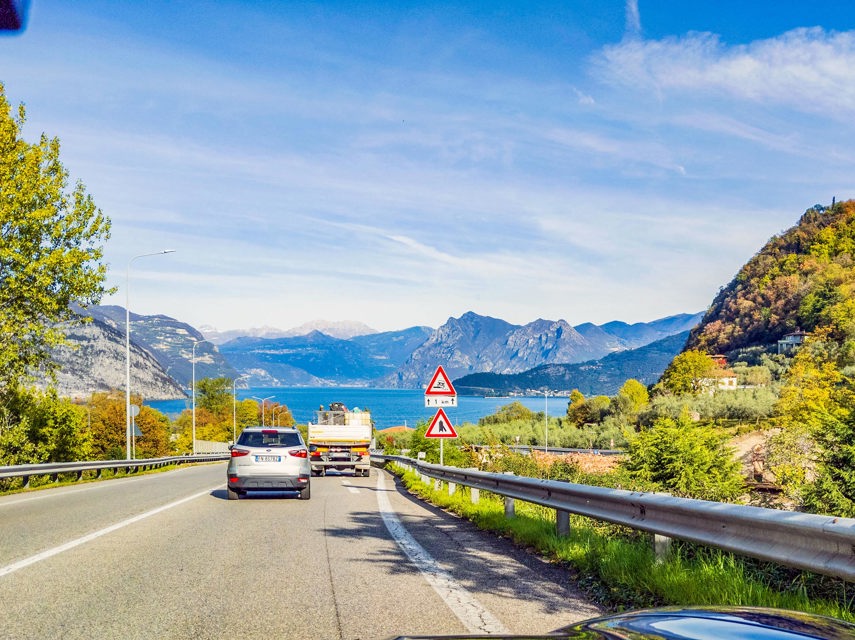
“Here we give people a licence, we have minimum requirements, and then they’re off to the races and they’re doing whatever they want. And then we have problems as a result of that. We have a car culture that doesn’t really buy into driving safety,” said Shapiro.
But being safer on the roads is not hard. It just takes a conscious effort. Simple rules like obeying the speed limit and staying to the right except when passing make the highways safer for everyone. And that includes letting faster traffic pass even if they are speeding. Let police officers like Shapiro take care of the law and its enforcement.
